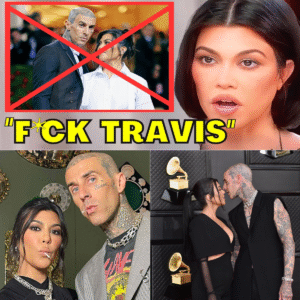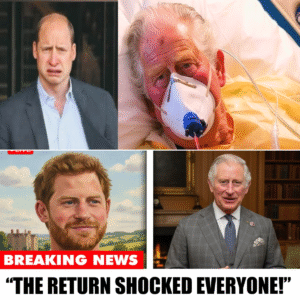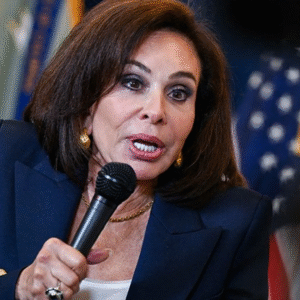Ted Bundy’s Final Hours: A Calculated Confession and a Nation’s Catharsis
By Elena Vasquez, Crime Correspondent
STARKE, Fla. — On the eve of his execution on January 24, 1989, Ted Bundy, America’s most notorious serial killer, orchestrated a final act as calculated as the crimes that defined his life. In the 24 hours leading to his death in Florida’s electric chair, Bundy unleashed a torrent of confessions, spiritual reflections, and media manipulation that captivated the nation and reshaped how we understand the psyche of a killer. Far from a chaotic unraveling, these moments were a meticulously staged performance by a man desperate to control his legacy even as the clock ran out. The result was a chilling spectacle that remains one of the most unforgettable chapters in U.S. criminal history.
Bundy’s final day began not with resignation but with a strategic pivot. For years, he had dodged accountability, charming reporters, manipulating the legal system, and maintaining a veneer of innocence despite overwhelming evidence. But by January 23, 1989, with all appeals exhausted, the 42-year-old former law student faced the inevitable. What unfolded was not the breakdown of a broken man but a masterclass in narrative control, blending raw vulnerability with cold calculation.
:max_bytes(150000):strip_icc():focal(660x413:662x415)/theodore-ted-bundy-court-1978-080625-28792f43bb974503be6b2ee2a67d30a3.jpg)
The centerpiece of Bundy’s last day was a televised interview with James Dobson, a prominent evangelical broadcaster and founder of Focus on the Family. Conducted in a stark room at Florida State Prison, the interview, titled Fatal Addiction: Ted Bundy’s Final Interview, was no accident. Bundy chose Dobson for his conservative audience and anti-pornography agenda, knowing his claims would resonate. In a calm, deliberate tone, Bundy attributed his descent into murder to an escalating addiction to pornography, starting with “soft-core” magazines at age 12 and spiraling into violent material. “Like an addiction, you keep craving something harder,” he told Dobson, framing his crimes as the product of societal decay rather than innate evil. “I’m not blaming pornography,” he added, carefully balancing responsibility with external causation. “I take full responsibility for what I’ve done.”
This narrative was a bombshell, igniting debates about media influence that persist today. Critics, including biographer Ann Rule, argued Bundy tailored his story to Dobson’s crusade, casting himself as both perpetrator and cautionary tale. The timing—hours before his execution—lent his words an aura of finality, ensuring they would be dissected for decades. Was this genuine insight or a last-ditch manipulation? The ambiguity only amplified the interview’s impact, cementing Bundy’s place in the cultural zeitgeist.
As night fell, Bundy shifted gears, delivering a cascade of confessions to FBI Agent Bill Hagmeier and other investigators. In a methodical recounting, he admitted to 30 murders across seven states—Washington, Utah, Colorado, Florida, Oregon, Idaho, and California—between 1973 and 1978. These were not impulsive admissions but part of a long-held strategy, dubbed “Ted’s bones,” where he dribbled out details to delay execution. With no more stays possible, Bundy’s confessions became a performance of cooperation, offering closure to families while preserving his mystique. He described dump sites, victim selection, and disposal methods with clinical detachment, chilling investigators. “He spoke about murder like someone describing their commute,” Hagmeier later recalled.

Yet, cracks in Bundy’s facade appeared. When pressed about the 1978 murder of 12-year-old Kimberly Leach, his composure faltered. “I can’t talk about that right now,” he said, voice breaking. “It’s too painful.” This rare vulnerability—whether genuine or performative—hinted at a man grappling with his humanity, or at least projecting it for posterity. His confessions, while invaluable to law enforcement, were laced with ambiguity, withholding key details to maintain control even in his final hours.
Amid these admissions, Bundy sought spiritual solace, spending hours with Methodist minister Fred Lawrence. Witnesses described a tearful Bundy praying and reflecting, a stark contrast to the charismatic predator who once manipulated juries. “He didn’t want to die, but he knew he had to,” Lawrence later said, recounting their emotional exchanges. “We both cried—for him, and for his victims.” These moments added a layer of complexity to Bundy’s final act, blurring the line between monster and man.
Outside the prison, a carnival-like atmosphere unfolded. A crowd of 500 gathered, chanting “Burn, Bundy, burn!” and setting off fireworks. Fraternity brothers from Florida State University hosted a cookout, grilling “Bundy burgers” under banners proclaiming “Watch Ted Fry.” The public’s fervor, unprecedented even in execution-heavy Florida, reflected the visceral horror Bundy’s crimes—confirmed to include at least 30 young women—had inflicted. His charm, once his deadliest weapon, had made his evil uniquely terrifying.
In his final hours, Bundy made two emotional calls to his mother, Louise Bundy, who told him, “You’ll always be my precious son.” These conversations, described as heartrending, humanized a man who had spent decades crafting a monstrous persona. Refusing a final meal, he left the standard steak and eggs untouched, a symbolic rejection of ritual. By 7 a.m., his head shaved for the electric chair’s electrodes, Bundy was a shadow of the confident figure who once dominated courtrooms. Witnesses noted his ashen face and trembling limbs as guards strapped him in.
At 7:06 a.m., before 42 witnesses, including prosecutors, Bundy entered the execution chamber. He nodded to his lawyer, Jim Coleman, and Minister Lawrence, offering brief final words: “Jim and Fred, I’d like you to give my love to my family and friends.” At 7:16 a.m., a 2,000-volt surge ended his life. “His fists clenched, thumb between fingers,” one witness recalled, haunted by the echo of victims strangled by those hands. A doctor confirmed his death, and the crowd outside erupted in cheers.
Bundy’s body was cremated, his ashes scattered in Washington’s Cascade Mountains, a final nod to where his killing spree began. His brain, studied for abnormalities, revealed none, leaving the mystery of his evil unresolved. In those 24 hours, Bundy had confessed, reflected, and manipulated one last time, ensuring his name would endure. His death closed a chapter but opened endless questions about remorse, redemption, and the nature of evil. As one witness put it, “He was a monster who wanted to be remembered as a man.” For better or worse, he succeeded.





